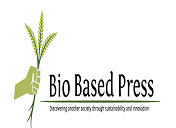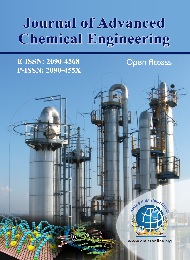Theme: Present Perspective and Future Prospects of Polymer Science
Biopolymers summit 2019
Advanced Biopolymers
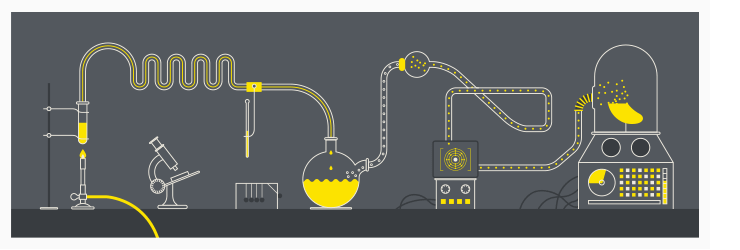
This session concerned with all aspects of advanced Biopolymers, bioplastic, biomaterials ,now Day the most promising Plastic isPolylactide (PLA) which instead of being manufactured from petrochemicals, are made from sustainable feedstocks such as sugar, starch or Cellulose. Till date, the use of biopolymers, including first generation PLA, has been limited by their Physical properties and relatively high cost of manufacture. Next generation biopolymers,bioplastic, including Plastic component fabrication, Polysaccharides second generation PLA, are expected to be cheaper and to offer improved performance and a wider application.
Biopolymers are polymers that occur in nature for example Carbohydrates and proteins. Biopolymers are already being produced commercially on large scales, although they usually are not used for the production of plastics. Even if only a small percentage of the biopolymers already being produced were used in the production of plastics, it would significantly decrease our dependence on manufactured, non-renewable resources.
This Session Include the Chemistry of biopolymers, Polylactic acid in Biopolymers,Bioplastic,Biomateri, Nucleic acids in Biopolymers, Polysaccharides in Biopolymers, Polynucleotide in Biopolymers.
The Global Bioplastics & Biopolymers & Biomaterials Market is poised to grow at a CAGR of around 12.8% over the next decade to reach approximately $8.9 billion by 2025.
The global Market increasing share of the various markets for Biopolymers,Biomaterials,Bioplastics. Innovations has already achieved significant success with its early investments its £1.5m investment in obesity drug developer return up to £22m, following its sale for£100m in 2013, while the sale of Respivert, a small molecule drug discovery company, resulted in Innovations realizing £9.5m, a 4.7 return on investment. In the year to2015, Innovations invested £14.0m in 20 ventures, helping to launch three new companies.
Biopolymers | Bioplastics | Polymer Chemistry | Biofuels | Bio-Catalysis | Biopolymers Conferences | Biodegradable Plastics | Synthetic Polymers | Polymer Nanotechnology | Functional Polymers | Smart Material | Biodegradable Plastics | Renewable Resources | Polymer catalyst | Bio-Catalysis | Solid waste management
Recent Advances in Polymer Chemistry
This session content advances in polymer technology. Polymer Chemistry is the branch of chemistry that deals with number of monomer unit. Oligomers with only a few repeating units to high polymers with thousands or millions of repeating units. Polymer Chemistry includes branches that mimic the divisions of the field of chemistry as a whole, with synthetic (preparation methods) and physical (property determination), biological (proteins, polysaccharides, and polynucleic acids), and analytical (qualitative and quantitative analysis) chemistry. Pre-existing polymers can also be modified by chemical means - including grafting or functionalization reactions. Polymerization and modification reactions can be employed to produce designer polymers as new materials with practically any desired properties
This session represent Enhanced tumor targeted gene delivery, Polymers for tissue engineering, Multifunctional lanthanide coordination polymers, Recent advances in regenerated cellulose materials, Polymers with upper critical solution temperature in alcohol.
Market analysts forecast the global advanced polymer composites market to grow at a CAGR of 8.13% over 2014-2019.
The present scenario and the growth prospects of the global advanced polymer composites market for the period 2015-2019. To calculate the market size, the report considers the revenue generated from the sales of advanced polymer composites. It also presents the vendor landscape and a corresponding detailed analysis of the top five vendors in the market. In addition to provides data on various segments of the market, which are based on the criteria such as type (glass, carbon, and aramid), application (aerospace and aviation, automotive, energy, electronics, marine, and others), and geography (North America, Europe, APAC, and ROW)
Biopolymers | Bioplastics | Polymer Chemistry | Biofuels | Bio-Catalysis | Biopolymers Conferences | Biodegradable Plastics | Synthetic Polymers | Polymer Nanotechnology | Functional Polymers | Smart Material | Biodegradable Plastics | Renewable Resources | Polymer catalyst | Bio-Catalysis | Solid waste management
Recent Advances in Polymer Nanotechnology

This session presents the Polymer Nanotechnology. and its application in various field. Nanotechnology is one of the most popular areas for current research and development in basically all technical disciplines. This obviously includes polymer Nanotechnology which include microelectronics (which could now be referred to as nanomaterial), polymer-based biomaterials, Nano medicine, Nano emulsion particles; fuel cell electrode polymer bound catalysts, layer-by-layer self-assembled polymer films, electros pun nanofabrication, imprint lithography, polymer blends and Nano composites. Even in the field of Nano composites, many diverse topics exist including composite reinforcement, barrier properties, flame resistance, electro-optical properties, cosmetic applications, bactericidal properties. Nanotechnology, is not new to polymer science as prior studies before the ages of nanotechnology involved Nano scale dimensions but were not specifically referred to as nanotechnology until recently. Phase separated polymer blends often achieve Nano scale phase dimensions; block copolymer domain morphology is usually at the Nano scale level; asymmetric membranes often have Nano scale void structure, mini emulsion particles In the large field of nanotechnology, polymer matrix based Nano composites have become a prominent area of current research and development.
This session represents the Preparation of Nano-particles by emulsion polycondensation, Conjugated polymers for photovoltaic devices, Dispersion of single-walled carbon nanotubes using polymers, Polymer–Nano shell composites for photothermally drug delivery, Synthesis and characterization of polymer Nano-composites, Application of novel polymeric nanoparticles.
Asia pacific accounted for largest market share for poly Nanocomposite application owing to widespread use in various industries including packaging, automotive, electronics & semiconductor, aerospace, defense and coatings. Growing electrical and electronics market in South East Asia particularly in South Korea, Japan and China is expected to boost the poly Nanocomposite market over the forecast period.
Biopolymers | Bioplastics | Polymer Chemistry | Biofuels | Bio-Catalysis | Biopolymers Conferences | Biodegradable Plastics | Synthetic Polymers | Polymer Nanotechnology | Functional Polymers | Smart Material | Biodegradable Plastics | Renewable Resources | Polymer catalyst | Bio-Catalysis | Solid waste management
Synthetic Polymers
This session content application and synthesis of synthetic polymer. Synthetic Polymers is a comprehensive introduction to the technologies involved in the synthesis of the main classes of engineering high polymers used in such materials as plastics, fibers, rubbers, foams, adhesives and coatings. Besides the basic processes, this volume includes information on physical, chemical and mechanical characteristics - key factors with respect to obtaining the right end products. It also focuses on the main application of synthetic polymers in different engineering areas and gives data on production and consumption. Over 60 technological flowcharts are presented in a clear and concise manner, to provide the reader with essential information on relevant operations.
This session represent The Mechanochemical modeling of synthetic polymers, Uses of synthetic polymers in daily life, Synthetic polymers with intrinsic anticancer activity, Thermal decomposition of cellulose/synthetic polymer, Synthetic polymers used in biopharmaceutical delivery, Synthetic organic polymers are human mad.
Global Synthetic Latex Polymer Market CAGR Growth of 3% by 2019.
Global market research analyst predicts the synthetic latex polymers market to grow at a CAGR of around 3% during the forecast period. The increased demand for paints, coatings, and adhesives and sealants due to the global recovery of the housing market is driving the market growth. The housing market in countries such as China, Russia, Turkey, Luxemburg, Singapore, Columbia, and India are witnessing substantial growth thereby driving the demand for latex polymer based paints and coatings.
Biopolymers | Bioplastics | Polymer Chemistry | Biofuels | Bio-Catalysis | Biopolymers Conferences | Biodegradable Plastics | Synthetic Polymers | Polymer Nanotechnology | Functional Polymers | Smart Material | Biodegradable Plastics | Renewable Resources | Polymer catalyst | Bio-Catalysis | Solid waste management
Biopolymers: Applications and Trends
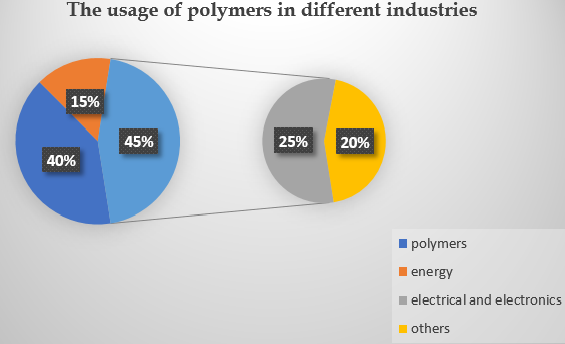
This session contents the biopolymers application and trends in different field. It provides an up-to-date summary of the varying market applications of biopolymers characterized by biodegradability and sustainability. It includes tables with the commercial names and properties of each biopolymer family, along with biopolymers for each marketing segment, not only presenting all the major market players, but also highlighting trends and new developments in products. Biopolymers have been mainly used by mankind as food, or for making clothing and furniture. Since the industrial time, fossil fuels such as oil are the greatest source in the development and manufacture of almost every commercial product, such as the plastic, which is currently used at a very large scale. But these fuels are not unlimited resources, and environmental concerns over all aspects of using fossil fuels for production and energy must be taken into account.
This session represent the Packaging Agriculture/Forestry/Fishery, Electronics, Automotive Applications, Medical, Dental, and Pharmaceutical Application, Cosmetics.
The Global Bioplastics & Biopolymers Market is poised to grow at a CAGR of around 12.8% over the next decade to reach approximately $8.9 billion by 2025.
The global Market increasing share of the various markets for Biopolymers. Innovations has already achieved significant success with its early investments its £1.5m investment in obesity drug developer return up to £22m, following its sale for£100m in 2013, while the sale of Respivert, a small molecule drug discovery company, resulted in Innovations realizing £9.5m, a 4.7 return on investment. In the year to2015, Innovations invested £14.0m in 20 ventures, helping to launch three new companies.
Biopolymers | Bioplastics | Polymer Chemistry | Biofuels | Bio-Catalysis | Biopolymers Conferences | Biodegradable Plastics | Synthetic Polymers | Polymer Nanotechnology | Functional Polymers | Smart Material | Biodegradable Plastics | Renewable Resources | Polymer catalyst | Bio-Catalysis | Solid waste management
Smart Material and Functional Polymers
This session contents Smart functional polymers have gained huge amount of interest in recent times due to their innumerable applications in the areas including sensors, actuators, and switchable wettability, bio-medical and environmental applications. Polymers that possess the ability to respond to external stimuliare referred to as smart polymers or stimuli responsive polymers
This session content Smart polymers for microfluidics, Semiconducting Conjugated Polymers, Stimuli-Responsive Polymers, Biomimetic Materials And Supramolecular Metallopolymers
Biopolymers | Bioplastics | Polymer Chemistry | Biofuels | Bio-Catalysis | Biopolymers Conferences | Biodegradable Plastics | Synthetic Polymers | Polymer Nanotechnology | Functional Polymers | Smart Material | Biodegradable Plastics | Renewable Resources | Polymer catalyst | Bio-Catalysis | Solid waste management
Biopolymers and Biodegradable Plastics
This session presents the Biodegradable plastics (Bio plastics) are one of the important issues in plastic industry. These are natural biopolymers that are synthesized and catabolized by various organisms. These materials do not cause toxic effect to the nature. The use of biopolymers could markedly increase as more durable versions are developed, and the cost to manufacture these bio-plastics continues to go fall. Bio-plastics can replace conventional plastics in the field of their applications also and can be used in different sectors such as food packaging, plastic plates, cups, cutlery, plastic storage bags, storage containers or other plastic or composite materials items you are buying and therefore can help in making environment sustainable.
This session represent the Polymeric Biomaterials, Applications of Poly (lactic Acid), Biodegradable Polymers and Polymer Blends, Application of biodegradable plastics.
The Global Biodegradable plastic Market is grow around $3.4 Billion by 2020, at a CAGR of 10.8 between 2015 and 2020.
The biodegradable plastics market is projected to grow from more than USD 2.0 Billion in 2015 to USD 3.4 Billion by 2020, at a CAGR of 10.8% between 2015 and 2020. The report explains the driving and restraining factors of the global biodegradable plastics market with an analysis of trends, opportunities, and challenges. The biodegradable plastics market is segmented by type, by application, and by region. The market size of each region, namely, Western Europe, North America, Asia-Pacific, and Rest of the World (RoW) is projected in the report. The key countries such as the U.S., Germany, China, and Japan are covered and their respective market sizes are forecasted along with their growth rates.
Biopolymers | Bioplastics | Polymer Chemistry | Biofuels | Bio-Catalysis | Biopolymers Conferences | Biodegradable Plastics | Synthetic Polymers | Polymer Nanotechnology | Functional Polymers | Smart Material | Biodegradable Plastics | Renewable Resources | Polymer catalyst | Bio-Catalysis | Solid waste management
Emerging Technology on Biopolymers; Processing and Products
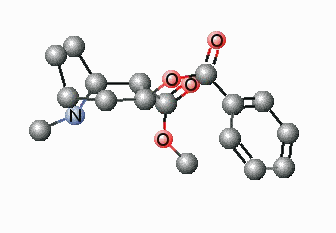
This session presents two main aspects of biopolymers; processing and product, The recent advance in converting natural polymers such as starch, protein, and cellulose for melt processing is briefly reviewed. The technical challenges for using natural polymers for thermoplastic applications and recent innovation in extrusion plasticization of starch enabling rapid expansion of starch for high valued polymer applications are summarized. extrusion plasticization extrusion plasticization including polylactic acid (PLA), terpolymer of terephthalic acid, adipic acid, and butandiol (Ecoflex polymer), and polybutylene succinate (PBS) are also briefly reviewed and provided with a special focus on inherent properties relevant to fiber and nonwoven applications. Technical approaches are discussed to enable high performance biopolyester melt spun webs. The effects on crystallization kinetics of heterogeneous nucleation with various nucleating agents are explored by using Avrami model. Process modifications are discussed including heated quench and heated fiber draw to maximize fibrous web crystallinity. Some biopolymers such as starch, protein, algae, and spunbond PLA are selected for anaerobic biodegradation in order to understand how they behave in the waste disposal environment. The results indicate that starch can achieve a complete biodegradation within about one month timeframe, whereas protein and algae can achieve 62 to 70% biodegradation. PLA biodegradation in anaerobic conditions is highly affected by degrading temperatures relative to its glass transition temperature.
This session represents Thermoplastic applications, extrusion plasticization, crystallization kinetics, crystallinity,biodegradation.
Bioprocess Market Size worth $71.03 Billion By 2021 | CAGR: 12.4%
The global top 10 bioprocess technology market is expected to reach USD 71.03 Billion by 2021 from USD 39.30 Billion in 2016, at a CAGR of 12.4% from 2016 to 2021. Rapid growth in pharmaceutical and biotechnology industries, growth in the number of new drug launches, strong trend of R&D in life sciences research, increasing government support for pharmaceutical and biotechnology industries, and rising prevalence of chronic diseases are the key factors driving the growth of this market.
Biopolymers | Bioplastics | Polymer Chemistry | Biofuels | Bio-Catalysis | Biopolymers Conferences | Biodegradable Plastics | Synthetic Polymers | Polymer Nanotechnology | Functional Polymers | Smart Material | Biodegradable Plastics | Renewable Resources | Polymer catalyst | Bio-Catalysis | Solid waste management
Biomedical and Environmental Applications
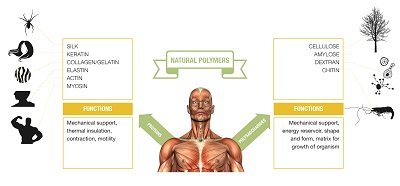
To Review the recent application and trends about Biopolymers and its Environmental Applications, this session is designed and focused to discuss advances in technology in all areas from chemical synthesis or biosynthesis to end use environment applications.
This Session content Polysaccharides, Bio fibers, Bio plastics, Biocomposites, Natural rubber and gums, Bacterialand blood compatible polymers, Miscellaneous biopolymers, Biopolymers for specific application.
The Global Biopolymers Market is poised to grow at a CAGR of around 12.8% over the next decade to reach approximately $8.9 billion by 2025.
Biopolymers | Bioplastics | Polymer Chemistry | Biofuels | Bio-Catalysis | Biopolymers Conferences | Biodegradable Plastics | Synthetic Polymers | Polymer Nanotechnology | Functional Polymers | Smart Material | Biodegradable Plastics | Renewable Resources | Polymer catalyst | Bio-Catalysis | Solid waste management
Recent Development in Biodegradable Materials
This session presents the product made from natural fiber reinforce biodegradable polymer composites are yet to be seen in high magnitude. Present scenario of biodegradable polymer composites promotes the use of environmentally friendly materials. Biodegradable Polymers can also use to control the drug release rate from the formulations. The applications of polymers in drug delivery have been realized because polymers offer unique properties which so far have not been attained by any other materials.
This session Represents the Thermoplastic starch, thermoplastic chitosan, Bio(co)polyesters, Synthesis by Enzymatic Catalysis, Biosynthesis and polymers preparation, Application of biodegradable polymers.
The Global Biodegradable polymer Market is poised to grow at a CAGR of around 21% by 2021.
The market research analyst predicts the global biodegradable polymers market to grow exponentially at a CAGR of around 21% by 2021. One of the key factors driving the growth of this market is the rise in enhanced consumer appeal to eco-friendly packaging. As consumer focus is changing towards healthier living, the demand for a natural, sustainable, and green product is also increasing.
Biopolymers | Bioplastics | Polymer Chemistry | Biofuels | Bio-Catalysis | Biopolymers Conferences | Biodegradable Plastics | Synthetic Polymers | Polymer Nanotechnology | Functional Polymers | Smart Material | Biodegradable Plastics | Renewable Resources | Polymer catalyst | Bio-Catalysis | Solid waste management
Biopolymers from Renewable Resources
This session presents the new biomass based composition from renewable resources. Now a day, it is clearly observed from the current scenario of environmental preservation a continuous definition and approval of growingly restrictive regulations and an increase in the market demand for products with a lower ecological footprint. Especially the automobile sector has been identified as one of the most involved in the adoption of protectionist measures towards the environment preservation, translating some of their major concerns in the increase of green materials demands. The technical performances of the developed base biopolymers will be enhanced by means of the addition of natural reinforcements functionalized to better tailor its properties of compatibility, dispersion, aspect ratio, etc.
This session represent Properties and Materials Applications, Polysaccharides, Alginates, Reduction of the dependence on fossil resources.
The market for renewable chemicals is in its infancy and is projected to witness dynamic growth at a CAGR of over 10.0% between 2015 and 2020
Biopolymers | Bioplastics | Polymer Chemistry | Biofuels | Bio-Catalysis | Biopolymers Conferences | Biodegradable Plastics | Synthetic Polymers | Polymer Nanotechnology | Functional Polymers | Smart Material | Biodegradable Plastics | Renewable Resources | Polymer catalyst | Bio-Catalysis | Solid waste management
Microwave-Enhanced Polymer Chemistry and Technology
This session approaches Polymer technology forms one of the largest areas of application of microwave technology, the methods and procedures used therein are among the most developed. Microwave-Enhanced Polymer Chemistry and Technology describes novel approaches to polymer processing using microwave technologies. Coverage includes background and scientific data, analysis of processes and product properties in comparison with existing technology, applications that are being used in various approaches, and the status of current research. Features of microwave irradiation, i.e., solvent-free reactions, low waste, energy efficiency, high yield, short reaction time, and possible use of alternative solvents, can play an important role in the development of green chemistry methods.
This session represent Polymerization Processes under Microwave Conditions in Comparison with Conventional Conditions, Thermoplastic Polymers, Thermosetting Resins, Polymer Composites and Blends, Renewable Resources for the Preparation of Polymeric Materials and Polymer Modification, Recycling of Plastics, Commercialization and Scaling-Up.
The global polymer industry is expected to grow with a CAGR of 3.9% over 2015-2020.
Biopolymers | Bioplastics | Polymer Chemistry | Biofuels | Bio-Catalysis | Biopolymers Conferences | Biodegradable Plastics | Synthetic Polymers | Polymer Nanotechnology | Functional Polymers | Smart Material | Biodegradable Plastics | Renewable Resources | Polymer catalyst | Bio-Catalysis | Solid waste management
Advanced Polymer catalyst and energy application.
This session content polymer energy application. Global demand for low cost, efficient and sustainable energy production is ever increasing. Driven by recent discoveries and innovation in the science and technology of materials, applications based on functional materials are becoming increasingly important. Functional materials for sustainable energy applications provide an essential guide to the development and application of these materials in sustainable energy production.
This session represent the implementation of a solid-state polymerization, Polymer-supported multivalent organcatalysts, Capillary micro flow reactors, Water based blend nanoparticles, Polymer-protected Nano sized catalysts, Catalysis by polymer-metal complexes, Catalyzed polymers applications on energy storage, Catalysis by linear polymers in solutions.
The Global Polymerization Catalysts Market is Expected to Value USD 4,008.99 Million In 2016, And Is Likely To Reach USD 5,242.08 Million By 2021, growing at an estimated CAGR of 5.51%, during the forecast period, 2016-2021.
Biopolymers | Bioplastics | Polymer Chemistry | Biofuels | Bio-Catalysis | Biopolymers Conferences | Biodegradable Plastics | Synthetic Polymers | Polymer Nanotechnology | Functional Polymers | Smart Material | Biodegradable Plastics | Renewable Resources | Polymer catalyst | Bio-Catalysis | Solid waste management
Bio-Catalysis in chemistry
This session contain bio-catalyst and function. The main function of catalysts is to speed up reactions without becoming a part of the reaction products. Enzymes, the biological catalysts are highly specific, catalyzing a single chemical reaction or a very few closely related reactions. The exact structure of an enzyme and its active site determines the specificity of the enzyme. Substrate molecules bind themselves at the enzyme's active site. Substrates initially bind to the enzymes by non-covalent interactions, including hydrogen bonds, ionic bonds and hydrophobic interactions. Enzymes lower the activation energy and the reactions proceed toward equilibrium more rapidly than the uncatalyzed reactions. Both prokaryotic and eukaryotic cells commonly use allosteric regulation in responding to changes in conditions within the cells. Allosteric regulation can be positive or negative. Regulation by allosteric inhibitors is common in many biosynthetic pathways. A protective peptide in zymogens regulates by inactivating the protein.
This session represents Synthetic polyester-hydrolyzing enzymes, Production of a polyester degrading extracellular hydrolase, Functional characterization of synthetic polyester, Enzymes for the bio functionalization, Smart nanotubes for bio separations and bio catalysis
Global Biocatalysis and Biocatalysts Market to grow at a CAGR of 6.34% during the period 2016- 2020.
The biocatalysts market was estimated around 81 kilo tons in 2013, with the high share of around 70% held by North America and Europe together. The global biocatalysts market by volume is projected to grow at a CAGR of 5.5% from 2014 to 2019. The high growth is forecasted to be in the RoW due to rise of end industries such as biofuel production, agriculture & feed, food and beverages in the region. Europe is estimated to have the second highest growth around 6.71% from 2014 to 2019.
Biopolymers | Bioplastics | Polymer Chemistry | Biofuels | Bio-Catalysis | Biopolymers Conferences | Biodegradable Plastics | Synthetic Polymers | Polymer Nanotechnology | Functional Polymers | Smart Material | Biodegradable Plastics | Renewable Resources | Polymer catalyst | Bio-Catalysis | Solid waste management
Solid waste management of polymers
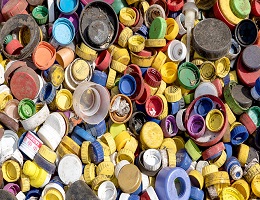
This session content plastic waste management In the past 30 years, plastic products have gained universal use not only in food, clothing and shelter, but also in the transportation, construction, medical and leisure industries. Whereas previously synthetic plastics were developed as durable substitute products, increasing concern for the global environment and solid waste management has resulted in an urgent demand for biodegradable plastics.
This session represent the Challenges associated with polymers, Compatibility of polymers with waste management, Combustion of polymers produces heat energy, Sustainable disposal of municipal solid waste, Pyrolysis: thermal cracking of polymers, Recycling of plastic waste by density separation.
Global solid waste management market size was valued at more than USD 180 billion in 2015 and is estimated to exceed USD 300 billion by 2023, growing at a CAGR of over 8.5%.
Coupled with rapid industrialization and shifting of industries in other regions towards Asia-Pacific, the region has witnessed exponential growth in industrial activities, resulting in huge amounts of generated industrial waste. The industrial waste management market in Asia-Pacific is expected to grow at a CAGR of 11.4% between 2014 and 2019. This substantial amount of generated waste requires effective processing and disposal to minimize environmental hazards. However, as existing industrial waste processing systems are grossly inadequate, the region is expected to witness huge investments in the waste recycling and services industry.
Biopolymers | Bioplastics | Polymer Chemistry | Biofuels | Bio-Catalysis | Biopolymers Conferences | Biodegradable Plastics | Synthetic Polymers | Polymer Nanotechnology | Functional Polymers | Smart Material | Biodegradable Plastics | Renewable Resources | Polymer catalyst | Bio-Catalysis | Solid waste management
Marketing of polymer

This session presents the strategy in building market. The important part of marketing is market mix and consists of the marketing 'tools' you are going to use. But marketing strategy is more than the marketing of mixed polymers and plastics. The marketing strategy sets your marketing goals, defines your target markets and describes how you will go about positioning the business to achieve advantage over your competitors. The marketing mix, which follows from your marketing strategy, is how you achieve that 'unique selling proposition' and deliver benefits to your customers. When you have developed your Polymer marketing strategy, it is usually written down in a marketing plan. The plan usually goes further than the strategy, including detail such as budgets. You need to have a marketing strategy before you can write a marketing plan. Your marketing strategy may serve you well for a number of years but the details, such as budgets for marketing activities, of the marketing plan may need to be updated every year.
This session represents the polymers in textile marketing, Growth opportunities in shifting polymers markets, Polymers in plastic industry, Identify most cost-effective raw materials to use, Industry profitability for investments on polymers.
The global polymer fillers market is anticipated to grow at a steady rate and will post a CAGR of close to 5% during the forecast period. The increasing number of stringent guidelines and environmental regulations will drive the growth prospects for the global polymer fillers market until the end of 2021.
Biopolymers | Bioplastics | Polymer Chemistry | Biofuels | Bio-Catalysis | Biopolymers Conferences | Biodegradable Plastics | Synthetic Polymers | Polymer Nanotechnology | Functional Polymers | Smart Material | Biodegradable Plastics | Renewable Resources | Polymer catalyst | Bio-Catalysis | Solid waste management
Biopolymer Societies and Associations:
- European Polymer Federation
- European Society for Biomaterials
- Federation of European Biochemical Societies
- Federation of European Materials Societies
- Federation of European Materials Society
- Belgian Polymer Group (BPG)
- Polymer processing society
- American Society for Biochemistry
- Argentinian Association for Chemical Engineers
- Canadian Society for Chemical Engineering (CSChE)
- Canadian Society for Chemistry
- Croatian Society of Chemical Engineers
- US Chemistry and Biochemistry departments and association
- Israel Institute of Chemical Engineers (IIChe)
- Italian Chemical Society
- Korean Chemical Society
- Polymer Division of the Royal Australian Chemical Institute; Society of Chemical Engineers New Zealand
- Thai Institute of Chemical Engineering and Applied Chemistry
We are glad to invite all the participants from the world to attend "9th World Congress on Biopolymers and Polymer Chemistry" which is going to be held on july 15-16, 2019 at Bangkok , Thailand which contains expeditious keynote presentations, Poster presentations, Oral talks, Workshop and Exhibitions. The vital theme of the conference is "Present Perspective and Future Prospects of Polymer Science".
Biopolymers and polymer chemistry 2019 World congress is an attempt to explore the various ways to utilize natural resources for betterment of the future, promising a better tomorrow for the progeny and a better vision for the springing research. Polymer chemistry conferences and Biopolymers conferences is anticipated to be one of the best scientific conferences in Asia and Australia. The scientific sessions of this International Conference on polymer chemistry and Biopolymers conferences has been designed on vivacious topics such as Biomaterials and Biopolymers, Bioplastic,Green Chemicals, Industrial Biotechnology, Micro and Nano blends based on natural polymers. Biopolymers conferences and chemical engineering conference are consisting of well-organized scientific program and effervescent speeches by the expertise. ConferenceSeries Ltd Organizes 300+ Conferences, 500+ Workshops and 200+ Symposiums Every Year on Pharma, Medicine, Science and Technology across USA, Europe & Asia (conference series) with support from 1000 more scientific societies and Publishes 400+ Open access journals which contains over 30000 eminent personalities, reputed scientists as editorial board members. ConferenceSeries LLC Ltd conferences always encourage the young researchers and students to share their excitement and enthusiasm with world class expertise.
Why to attend???
Biopolymers conferences and polymer chemistry conferences is an event delivering the concept of bio based world across the globe. In the present world where the use of conventional plastics, the consequences of plastic products use and the waste management of these products when they become waste, is a current and pressing issue. Concerns focus on the potential impact of conventional plastics they cause to the environment. Biopolymers conferences is mainly delineation for scientists and bioplastics,biomaterials Research porfessors and Research students from chemical Engineering and Polymer Technology Bioplastics.
Target Audience:
- Eminent Scientists of biopolymers conferences and Bio plastics conferene
- Chemical engineering Research Professors
- Junior/Senior research fellows of biomaterials and bioproducts
- CEO’s of biopolymers companies
- Members of different physics associations of Biopolymers and bioplastics
- Biopolymers doctorates
- conspicuous scientists of biopolymers and bioplastics
About Bangkok!!!!
Bangkok is the capital and most populous city of Thailand, Bangkok is one of the world's top tourist destinations. Of 162 cities worldwide, MasterCard ranked Bangkok as the top destination city by international visitor arrivals in its Global Destination Cities . Euromonitor International ranked Bangkok fourth in its Top City Destinations Ranking for 2016. Bangkok was also named "World's Best City rapid growth coupled with little urban planning has resulted in a haphazard cityscape and inadequate infrastructure. An inadequate road network, despite an extensive expressway network, together with substantial private car usage, Bangkok's multi-faceted sights, attractions and city life appeal to diverse groups of tourists. Royal palaces and temples as well as several museums constitute its major historical and cultural tourist attractions. Shopping and dining experiences offer a wide range of choices and prices. The city is also famous for its dynamic nightlife.
Conference Keywords
- Biomaterials:
- what are biopolymers:
- Biopolymer Classification:
- Types of Biopolymer:
- Difference between Biopolymers and Synthetic Polymers:
- Applications of biopolymers:
- Disposal and Recycling of Bio plastic Materials:
- what is polymer chemistry:
- polymer chemistry basics:
- Types of polymers:
- Polymer Properties:
- Biodegradable Polymers
- Polymer synthesis:
- Nano polymer:
- Homopolymer:
- Elastomers:
- 3D Printed PLA:
- Thermosetting Polymers:
- Poly(ethylene):
- Poly(propylene):
- Poly(methyl methacrylate):
- Poly(styrene)
- Nylons:
- PVC:
- Industrial Policy For Plastic Product Manufacturing:
- Profitable Plastic Product Manufacturing:
- Fundamentals of the Polymers Business:
- Bio fibers:
- Bio Plastic:
- Biopolymers in drug delivery:
- Plastics engineering:
- Polymer fabrication process:
- Polymer Companies:
- Polymer traders:
- Polymer Associations and society:
- Polymer Clay:
- Polymer Sales & Distribution:
- High Impact Polystyrene:
- Polyethylene terephthalate:
- Polyethylene Terephthalate Glycol:
- Polycarbonate:
- Biopolymers journal:
- biomaterials engineering:
- journal of biomaterials applications:
- The chemistry of polymers:
Biopolymers | Bioplastics | Polymer Chemistry | Biofuels | Bio-Catalysis | Biopolymers Conferences | Biodegradable Plastics | Synthetic Polymers | Polymer Nanotechnology | Functional Polymers | Smart Material | Biodegradable Plastics | Renewable Resources | Polymer catalyst | Bio-Catalysis | Solid waste management
A chemical substance produced by a living organism is called Biomaterials, molecule present in a living organism is called Biogenic molecule. Biotic material, Natural material., Bioplastic
Biopolymers | Bioplastics | Polymer Chemistry | Biofuels | Bio-Catalysis | Biopolymers Conferences | Biodegradable Plastics | Synthetic Polymers | Polymer Nanotechnology | Functional Polymers | Smart Material | Biodegradable Plastics | Renewable Resources | Polymer catalyst | Bio-Catalysis | Solid waste management
Biopolymers are polymers produced by living organisms, they are polymeric biomolecules Biopolymers can be polynucleotides (such as the nucleic acids DNA and RNA), polypeptides (that is, proteins) or polysaccharides (that is polymeric carbohydrates).These consist of long chains made of repeating, covalently bonded units, such as nucleotides, amino acids or monosaccharide’s.
Biopolymers | Bioplastics | Polymer Chemistry | Biofuels | Bio-Catalysis | Biopolymers Conferences | Biodegradable Plastics | Synthetic Polymers | Polymer Nanotechnology | Functional Polymers | Smart Material | Biodegradable Plastics | Renewable Resources | Polymer catalyst | Bio-Catalysis | Solid waste management
Sugar based Biopolymers, Starch based Biopolymers, Biopolymers based on Synthetic materials, Cellulose based Biopolymers,
Biopolymers | Bioplastics | Polymer Chemistry | Biofuels | Bio-Catalysis | Biopolymers Conferences | Biodegradable Plastics | Synthetic Polymers | Polymer Nanotechnology | Functional Polymers | Smart Material | Biodegradable Plastics | Renewable Resources | Polymer catalyst | Bio-Catalysis | Solid waste management
There are primarily two types of Biopolymer, one that is obtained from living organisms and another that is produced from renewable resources but require polymerization. Those created by living beings include proteinsand carbohydrates.
Biopolymers | Bioplastics | Polymer Chemistry | Biofuels | Bio-Catalysis | Biopolymers Conferences | Biodegradable Plastics | Synthetic Polymers | Polymer Nanotechnology | Functional Polymers | Smart Material | Biodegradable Plastics | Renewable Resources | Polymer catalyst | Bio-Catalysis | Solid waste management
Difference between Biopolymers and Synthetic Polymers
Major difference can be identified by their structure, Lignocellulose is a biopolymer with a finite structure, Relatively synthetic polymers are simple and arbitrary structures
Biopolymers | Bioplastics | Polymer Chemistry | Biofuels | Bio-Catalysis | Biopolymers Conferences | Biodegradable Plastics | Synthetic Polymers | Polymer Nanotechnology | Functional Polymers | Smart Material | Biodegradable Plastics | Renewable Resources | Polymer catalyst | Bio-Catalysis | Solid waste management
Applications of biopolymers are in various fields, especially in the field related to Nanoscaince, Biopolymers together with nanotechnology have already found many applications in various fields including water treatment, energy sector, biomedical application, and food industry, etc.
Biopolymers | Bioplastics | Polymer Chemistry | Biofuels | Bio-Catalysis | Biopolymers Conferences | Biodegradable Plastics | Synthetic Polymers | Polymer Nanotechnology | Functional Polymers | Smart Material | Biodegradable Plastics | Renewable Resources | Polymer catalyst | Bio-Catalysis | Solid waste management
Disposal and Recycling of Bio plastic Materials
Bio based materials offer advantages not only on the raw materials side but also on the disposal side through certain promising end-of-life (EOL). This is a very sensible and conservation-minded approach to resource efficiency and carbon dioxide reduction because it maximizes the benefits while minimizing the environmental impact
Biopolymers | Bioplastics | Polymer Chemistry | Biofuels | Bio-Catalysis | Biopolymers Conferences | Biodegradable Plastics | Synthetic Polymers | Polymer Nanotechnology | Functional Polymers | Smart Material | Biodegradable Plastics | Renewable Resources | Polymer catalyst | Bio-Catalysis | Solid waste management
Chemistry sub discipline that deals with the structures, chemical synthesis and properties of polymers
Biopolymers | Bioplastics | Polymer Chemistry | Biofuels | Bio-Catalysis | Biopolymers Conferences | Biodegradable Plastics | Synthetic Polymers | Polymer Nanotechnology | Functional Polymers | Smart Material | Biodegradable Plastics | Renewable Resources | Polymer catalyst | Bio-Catalysis | Solid waste management
The simplest definition of a polymer is a useful chemical made of many repeating units
Biopolymers | Bioplastics | Polymer Chemistry | Biofuels | Bio-Catalysis | Biopolymers Conferences | Biodegradable Plastics | Synthetic Polymers | Polymer Nanotechnology | Functional Polymers | Smart Material | Biodegradable Plastics | Renewable Resources | Polymer catalyst | Bio-Catalysis | Solid waste management
Types of polymers 1) Addition Polymers 2) Polyethylene 3) Polypropylene
4) poly(tetrafluoroethylene 5) Poly(vinyl Chloride) and Poly(vinylidene Chloride)
6) Acrylics 7) Condensation Polymers
Biopolymers | Bioplastics | Polymer Chemistry | Biofuels | Bio-Catalysis | Biopolymers Conferences | Biodegradable Plastics | Synthetic Polymers | Polymer Nanotechnology | Functional Polymers | Smart Material | Biodegradable Plastics | Renewable Resources | Polymer catalyst | Bio-Catalysis | Solid waste management
Polymers can be very resistant to chemicals, Generally, polymers are very light in weight with significant degrees of strength, Polymers are materials with a seemingly limitless range of characteristics and colors, Polymers can be both thermal and electrical insulators, Polymers can be processed in various ways, etc.
Biopolymers | Bioplastics | Polymer Chemistry | Biofuels | Bio-Catalysis | Biopolymers Conferences | Biodegradable Plastics | Synthetic Polymers | Polymer Nanotechnology | Functional Polymers | Smart Material | Biodegradable Plastics | Renewable Resources | Polymer catalyst | Bio-Catalysis | Solid waste management
Biodegradable polymers tend to consist of ester, amide, or ether bonds. In general, biodegradable polymers can be grouped into two large groups based on their structure and synthesis
Biopolymers | Bioplastics | Polymer Chemistry | Biofuels | Bio-Catalysis | Biopolymers Conferences | Biodegradable Plastics | Synthetic Polymers | Polymer Nanotechnology | Functional Polymers | Smart Material | Biodegradable Plastics | Renewable Resources | Polymer catalyst | Bio-Catalysis | Solid waste management
Polymer synthesis, also known as polymerization, is the process by which are covalently bonded to form a (usually long) polymer chain or network
Biopolymers | Bioplastics | Polymer Chemistry | Biofuels | Bio-Catalysis | Biopolymers Conferences | Biodegradable Plastics | Synthetic Polymers | Polymer Nanotechnology | Functional Polymers | Smart Material | Biodegradable Plastics | Renewable Resources | Polymer catalyst | Bio-Catalysis | Solid waste management
Polymer Nanocomposites consist of a polymer or copolymer having nanoparticles or Nanofillers dispersed in the polymer matrix. These may be of different shape, but at least one dimension must be in the range of 1–50 nm
Biopolymers | Bioplastics | Polymer Chemistry | Biofuels | Bio-Catalysis | Biopolymers Conferences | Biodegradable Plastics | Synthetic Polymers | Polymer Nanotechnology | Functional Polymers | Smart Material | Biodegradable Plastics | Renewable Resources | Polymer catalyst | Bio-Catalysis | Solid waste management
When a single monomer is polymerized into a macromolecule, the product is called a homopolymer
Biopolymers | Bioplastics | Polymer Chemistry | Biofuels | Bio-Catalysis | Biopolymers Conferences | Biodegradable Plastics | Synthetic Polymers | Polymer Nanotechnology | Functional Polymers | Smart Material | Biodegradable Plastics | Renewable Resources | Polymer catalyst | Bio-Catalysis | Solid waste management
Elastomer means “rubber". Some polymers which are elastomers include polyisoprene or natural rubber, polybutadiene, polyisobutylene, and polyurethanes
Biopolymers | Bioplastics | Polymer Chemistry | Biofuels | Bio-Catalysis | Biopolymers Conferences | Biodegradable Plastics | Synthetic Polymers | Polymer Nanotechnology | Functional Polymers | Smart Material | Biodegradable Plastics | Renewable Resources | Polymer catalyst | Bio-Catalysis | Solid waste management
Polylactic Acid (PLA) is a biodegradable thermoplastic, made from renewable resources like corn starch or sugarcane. Outside of 3D printing, it's typically used in medical implants, food packaging, and disposable tableware
Biopolymers | Bioplastics | Polymer Chemistry | Biofuels | Bio-Catalysis | Biopolymers Conferences | Biodegradable Plastics | Synthetic Polymers | Polymer Nanotechnology | Functional Polymers | Smart Material | Biodegradable Plastics | Renewable Resources | Polymer catalyst | Bio-Catalysis | Solid waste management
Synthetic materials that strengthen during being heated, but cannot be successfully remolded or reheated after their initial heat-forming. This is in contrast to thermoplastics, which soften when heated and harden and strengthen after cooling
Biopolymers | Bioplastics | Polymer Chemistry | Biofuels | Bio-Catalysis | Biopolymers Conferences | Biodegradable Plastics | Synthetic Polymers | Polymer Nanotechnology | Functional Polymers | Smart Material | Biodegradable Plastics | Renewable Resources | Polymer catalyst | Bio-Catalysis | Solid waste management
This polymer has one of the simplest molecular structures ([CH2CH2—]n) and is at present the largest tonnage plastic material, these include pipes, packaging, components for chemical plant, crates, and items for electrical insulation
Biopolymers | Bioplastics | Polymer Chemistry | Biofuels | Bio-Catalysis | Biopolymers Conferences | Biodegradable Plastics | Synthetic Polymers | Polymer Nanotechnology | Functional Polymers | Smart Material | Biodegradable Plastics | Renewable Resources | Polymer catalyst | Bio-Catalysis | Solid waste management
This polymer, which has the structure [—CH2CH(CH3)—]n arose as a commercial material following the work of Natta on catalysts for the preparation of high relative molar mass polymers from alkenes. it is used for one-piece molding’s, such as boxes for card indexes, which can be used over many years without damage.
Biopolymers | Bioplastics | Polymer Chemistry | Biofuels | Bio-Catalysis | Biopolymers Conferences | Biodegradable Plastics | Synthetic Polymers | Polymer Nanotechnology | Functional Polymers | Smart Material | Biodegradable Plastics | Renewable Resources | Polymer catalyst | Bio-Catalysis | Solid waste management
This polymer, whose name is often abbreviated to PMMA, is the most important of the commercial acrylic polymers. it is used for display signs, street lamp fittings, and ceiling lights in factories and offices. It is also the standard material for automobile rear lamp housings
Biopolymers | Bioplastics | Polymer Chemistry | Biofuels | Bio-Catalysis | Biopolymers Conferences | Biodegradable Plastics | Synthetic Polymers | Polymer Nanotechnology | Functional Polymers | Smart Material | Biodegradable Plastics | Renewable Resources | Polymer catalyst | Bio-Catalysis | Solid waste management
Poly(styrene) is a polymer which finds widespread use in the developed world on account of its desirable properties
Biopolymers | Bioplastics | Polymer Chemistry | Biofuels | Bio-Catalysis | Biopolymers Conferences | Biodegradable Plastics | Synthetic Polymers | Polymer Nanotechnology | Functional Polymers | Smart Material | Biodegradable Plastics | Renewable Resources | Polymer catalyst | Bio-Catalysis | Solid waste management
The name Nylon was given by the Du Pont Company of America to their first Synthetic condensation polymerformed by the reaction of difunctional acids with difunctional amines
Biopolymers | Bioplastics | Polymer Chemistry | Biofuels | Bio-Catalysis | Biopolymers Conferences | Biodegradable Plastics | Synthetic Polymers | Polymer Nanotechnology | Functional Polymers | Smart Material | Biodegradable Plastics | Renewable Resources | Polymer catalyst | Bio-Catalysis | Solid waste management
PVC is a thermoplastic made of 57% chlorine (derived from industrial grade salt) and 43% carbon (derived predominantly from oil / gas via ethylene)
Biopolymers | Bioplastics | Polymer Chemistry | Biofuels | Bio-Catalysis | Biopolymers Conferences | Biodegradable Plastics | Synthetic Polymers | Polymer Nanotechnology | Functional Polymers | Smart Material | Biodegradable Plastics | Renewable Resources | Polymer catalyst | Bio-Catalysis | Solid waste management
Industrial Policy For Plastic Product Manufacturing
Compulsory licensing is required for the following three items only viz. Hydrocyanic acid and its derivatives, Phosgene and its derivatives and Isocyanides and Di-isocyanides, some of which are used in the production of polymers
Biopolymers | Bioplastics | Polymer Chemistry | Biofuels | Bio-Catalysis | Biopolymers Conferences | Biodegradable Plastics | Synthetic Polymers | Polymer Nanotechnology | Functional Polymers | Smart Material | Biodegradable Plastics | Renewable Resources | Polymer catalyst | Bio-Catalysis | Solid waste management
Profitable Plastic Product Manufacturing
Air Bubble Packaging Wrapper, Acrylic Buttons Manufacturing, Disposable Plastic Syringe Making, HDPE Bag Making, Blow-Molded Plastic Product Manufacturing etc.
Biopolymers | Bioplastics | Polymer Chemistry | Biofuels | Bio-Catalysis | Biopolymers Conferences | Biodegradable Plastics | Synthetic Polymers | Polymer Nanotechnology | Functional Polymers | Smart Material | Biodegradable Plastics | Renewable Resources | Polymer catalyst | Bio-Catalysis | Solid waste management
Fundamentals of the Polymers Business
Main fundamentals of polymers business Exploring production processes, feedstocks, supply/demand trends, price drivers and regional dynamics in the context of recent developments
Biopolymers | Bioplastics | Polymer Chemistry | Biofuels | Bio-Catalysis | Biopolymers Conferences | Biodegradable Plastics | Synthetic Polymers | Polymer Nanotechnology | Functional Polymers | Smart Material | Biodegradable Plastics | Renewable Resources | Polymer catalyst | Bio-Catalysis | Solid waste management
Bio plastics are plastics derived from renewable biomass sources, such as vegetable fats and oils, corn starch, or micro biota. Bio plastic can be made from agricultural by-products and also from used plastic bottles and other containers using microorganisms
Biopolymers | Bioplastics | Polymer Chemistry | Biofuels | Bio-Catalysis | Biopolymers Conferences | Biodegradable Plastics | Synthetic Polymers | Polymer Nanotechnology | Functional Polymers | Smart Material | Biodegradable Plastics | Renewable Resources | Polymer catalyst | Bio-Catalysis | Solid waste management
bio fibers are the principal components of Biocomposites, which are derived from biological origins, for example fibers from crops (cotton, flax or hemp), recycled wood, waste paper, crop processing byproducts or regenerated cellulose fiber.
Biopolymers | Bioplastics | Polymer Chemistry | Biofuels | Bio-Catalysis | Biopolymers Conferences | Biodegradable Plastics | Synthetic Polymers | Polymer Nanotechnology | Functional Polymers | Smart Material | Biodegradable Plastics | Renewable Resources | Polymer catalyst | Bio-Catalysis | Solid waste management
Large numbers of biopolymers have been examined for the design of drug delivery systems. Structure, size, shape and multi-functionality of drug delivery system can be controlled by the nanotechnology combined with biopolymers
Biopolymers | Bioplastics | Polymer Chemistry | Biofuels | Bio-Catalysis | Biopolymers Conferences | Biodegradable Plastics | Synthetic Polymers | Polymer Nanotechnology | Functional Polymers | Smart Material | Biodegradable Plastics | Renewable Resources | Polymer catalyst | Bio-Catalysis | Solid waste management
Plastics engineering encompasses the processing, design, development, and manufacture of plastics products. A plastic is a polymeric material that is in a semi-liquid state, having the property of plasticity and exhibiting flow. Plastics engineering encompasses plastics material and plastic machinery
Biopolymers | Bioplastics | Polymer Chemistry | Biofuels | Bio-Catalysis | Biopolymers Conferences | Biodegradable Plastics | Synthetic Polymers | Polymer Nanotechnology | Functional Polymers | Smart Material | Biodegradable Plastics | Renewable Resources | Polymer catalyst | Bio-Catalysis | Solid waste management
Plastics are polymeric materials that are formed into a variety of three-dimensional shapes, often by molding or melt extrusion processes
Biopolymers | Bioplastics | Polymer Chemistry | Biofuels | Bio-Catalysis | Biopolymers Conferences | Biodegradable Plastics | Synthetic Polymers | Polymer Nanotechnology | Functional Polymers | Smart Material | Biodegradable Plastics | Renewable Resources | Polymer catalyst | Bio-Catalysis | Solid waste management
Amcor- Amcor is a global leader in responsible global packaging solutions, supplying a broad range of rigid & flexible packaging products into the food, beverage, healthcare, home and personal care and tobacco packaging industries
Biopolymers | Bioplastics | Polymer Chemistry | Biofuels | Bio-Catalysis | Biopolymers Conferences | Biodegradable Plastics | Synthetic Polymers | Polymer Nanotechnology | Functional Polymers | Smart Material | Biodegradable Plastics | Renewable Resources | Polymer catalyst | Bio-Catalysis | Solid waste management
Ball- Ball Corporation is a provider of metal packaging for beverages, foods and household products, and of aerospace and other technologies
Crown Holdings -Crown Holdings is a leader in metal packaging technology. With operations in 40 countries employing over 23,000 people and net sales of $9.1 billion, the company is uniquely positioned to bring best practices in quality and manufacturing to growing economies in Asia, Eastern Europe, South America and the Middle East and North Africa
International Paper, Mondi, Owens-Illinois, Reynolds Group, etc.
Advanced Polymer Trading FZC (APT) trades in a wide range of plastic, rubber, chemical and petrochemical markets and has clients in a diverse range of industries including, Automotive, Packaging, Construction, Road and building material, Paint, Resin and adhesives, Pipe, Medical, Agriculture, Shoe & leather
Biopolymers | Bioplastics | Polymer Chemistry | Biofuels | Bio-Catalysis | Biopolymers Conferences | Biodegradable Plastics | Synthetic Polymers | Polymer Nanotechnology | Functional Polymers | Smart Material | Biodegradable Plastics | Renewable Resources | Polymer catalyst | Bio-Catalysis | Solid waste management
Polymer Associations and society
Asian Polymer Association: The society involves academicians, scientists and technologists from all over the Asian countries providing a well knitted structure of the society. Vision of the society is to bring together Asian Science and Technology to the forefront of global arena so that a very dynamic association with the scientific world from Europe and America may be accomplished
Biopolymers | Bioplastics | Polymer Chemistry | Biofuels | Bio-Catalysis | Biopolymers Conferences | Biodegradable Plastics | Synthetic Polymers | Polymer Nanotechnology | Functional Polymers | Smart Material | Biodegradable Plastics | Renewable Resources | Polymer catalyst | Bio-Catalysis | Solid waste management
Polymer clays contain a basis of PVC resin and a liquid plasticizer making it a plastisol. A home pasta-making machine is a popular multi-purpose tool for polymer clay artists. It is used to create sheets of uniform thickness.
World Polymers is a trusted and experienced broker of prime, wide spec, recycled, commodity and engineering resins. Manufacturers worldwide Supporting the manufacturing processes such as: film/sheet/profile extrusion, blow molding and injection molding, and custom compounding, servicing diverse industry segments such as; automotive, medical, construction, film and packaging, dairy, telecommunications, agricultural, toys, home & garden products
Biopolymers | Bioplastics | Polymer Chemistry | Biofuels | Bio-Catalysis | Biopolymers Conferences | Biodegradable Plastics | Synthetic Polymers | Polymer Nanotechnology | Functional Polymers | Smart Material | Biodegradable Plastics | Renewable Resources | Polymer catalyst | Bio-Catalysis | Solid waste management
High Impact Polystyrene (HIS) is a low cost, tough plastic that is easy to thermoform and fabricate. High impact polystyrene can be assembled with mechanical fasteners, solvents, or adhesives.
Biopolymers | Bioplastics | Polymer Chemistry | Biofuels | Bio-Catalysis | Biopolymers Conferences | Biodegradable Plastics | Synthetic Polymers | Polymer Nanotechnology | Functional Polymers | Smart Material | Biodegradable Plastics | Renewable Resources | Polymer catalyst | Bio-Catalysis | Solid waste management
PET is produced by the polymerization of ethylene glycol and terephthalic acid. Ethylene glycol is a colorless liquid obtained from ethylene
Biopolymers | Bioplastics | Polymer Chemistry | Biofuels | Bio-Catalysis | Biopolymers Conferences | Biodegradable Plastics | Synthetic Polymers | Polymer Nanotechnology | Functional Polymers | Smart Material | Biodegradable Plastics | Renewable Resources | Polymer catalyst | Bio-Catalysis | Solid waste management
Polyethylene Terephthalate Glycol
(PETG) is a water clear material and designed to be very easy to use in a range of applications. It’s a thermoplastic polymer created through the copolymerization of PET and ethylene glycol.
Biopolymers | Bioplastics | Polymer Chemistry | Biofuels | Bio-Catalysis | Biopolymers Conferences | Biodegradable Plastics | Synthetic Polymers | Polymer Nanotechnology | Functional Polymers | Smart Material | Biodegradable Plastics | Renewable Resources | Polymer catalyst | Bio-Catalysis | Solid waste management
Polycarbonate plastics are a naturally transparent amorphous thermoplastic. Although they are made commercially available in a variety of colors
Biopolymers | Bioplastics | Polymer Chemistry | Biofuels | Bio-Catalysis | Biopolymers Conferences | Biodegradable Plastics | Synthetic Polymers | Polymer Nanotechnology | Functional Polymers | Smart Material | Biodegradable Plastics | Renewable Resources | Polymer catalyst | Bio-Catalysis | Solid waste management
American Peptide Society, Journal of Peptide Science, journal of peptide science impact factor, etc.
It deals with the study of the materials used in biological applications in medical devices and life science applications with a particular focus on structural biomaterials
Biopolymers | Bioplastics | Polymer Chemistry | Biofuels | Bio-Catalysis | Biopolymers Conferences | Biodegradable Plastics | Synthetic Polymers | Polymer Nanotechnology | Functional Polymers | Smart Material | Biodegradable Plastics | Renewable Resources | Polymer catalyst | Bio-Catalysis | Solid waste management
Journal of biomaterials applications
Sage Publications. PubMed Journals, SCImago, NCBI etc.
Natural and synthetic polymers have mainly carbon, hydrogen, oxygen, and nitrogen as their most common elements. DNA and RNA also have phosphorous,
Biopolymers | Bioplastics | Polymer Chemistry | Biofuels | Bio-Catalysis | Biopolymers Conferences | Biodegradable Plastics | Synthetic Polymers | Polymer Nanotechnology | Functional Polymers | Smart Material | Biodegradable Plastics | Renewable Resources | Polymer catalyst | Bio-Catalysis | Solid waste management
Biopolymers | Bioplastics | Polymer Chemistry | Biofuels | Bio-Catalysis | Biopolymers Conferences | Biodegradable Plastics | Synthetic Polymers | Polymer Nanotechnology | Functional Polymers | Smart Material | Biodegradable Plastics | Renewable Resources | Polymer catalyst | Bio-Catalysis | Solid waste management
Conference Highlights
- Advanced Biopolymers
- Recent Advances in Polymer Chemistry
- Recent Advances in Polymer Nanotechnology
- Synthetic Polymers
- Biopolymers: Applications and Trends
- Smart Material and Functional Polymers
- Biopolymers and Biodegradable Plastics
- Emerging Technology on Biopolymers; Processing and Products
- Biomedical and Environmental Applications
- Recent Development in Biodegradable Materials
- Biopolymers from Renewable Resources
- Microwave-Enhanced Polymer Chemistry and Technology
- Advanced Polymer catalyst and energy application.
- Bio-Catalysis in chemistry
- Solid waste management of polymers
- Marketing of polymer
- Polymers for tissue engineering
To share your views and research, please click here to register for the Conference.
To Collaborate Scientific Professionals around the World
| Conference Date | July 15-16, 2019 | ||
| Sponsors & Exhibitors |
|
||
| Speaker Opportunity Closed | |||
| Poster Opportunity Closed | Click Here to View | ||
Useful Links
Special Issues
All accepted abstracts will be published in respective Our International Journals.
- Journal of Material Sciences & Engineering
- Journal of Nanomaterials & Molecular Nanotechnology
- Journal of Advanced Chemical Engineering
Abstracts will be provided with Digital Object Identifier by




































